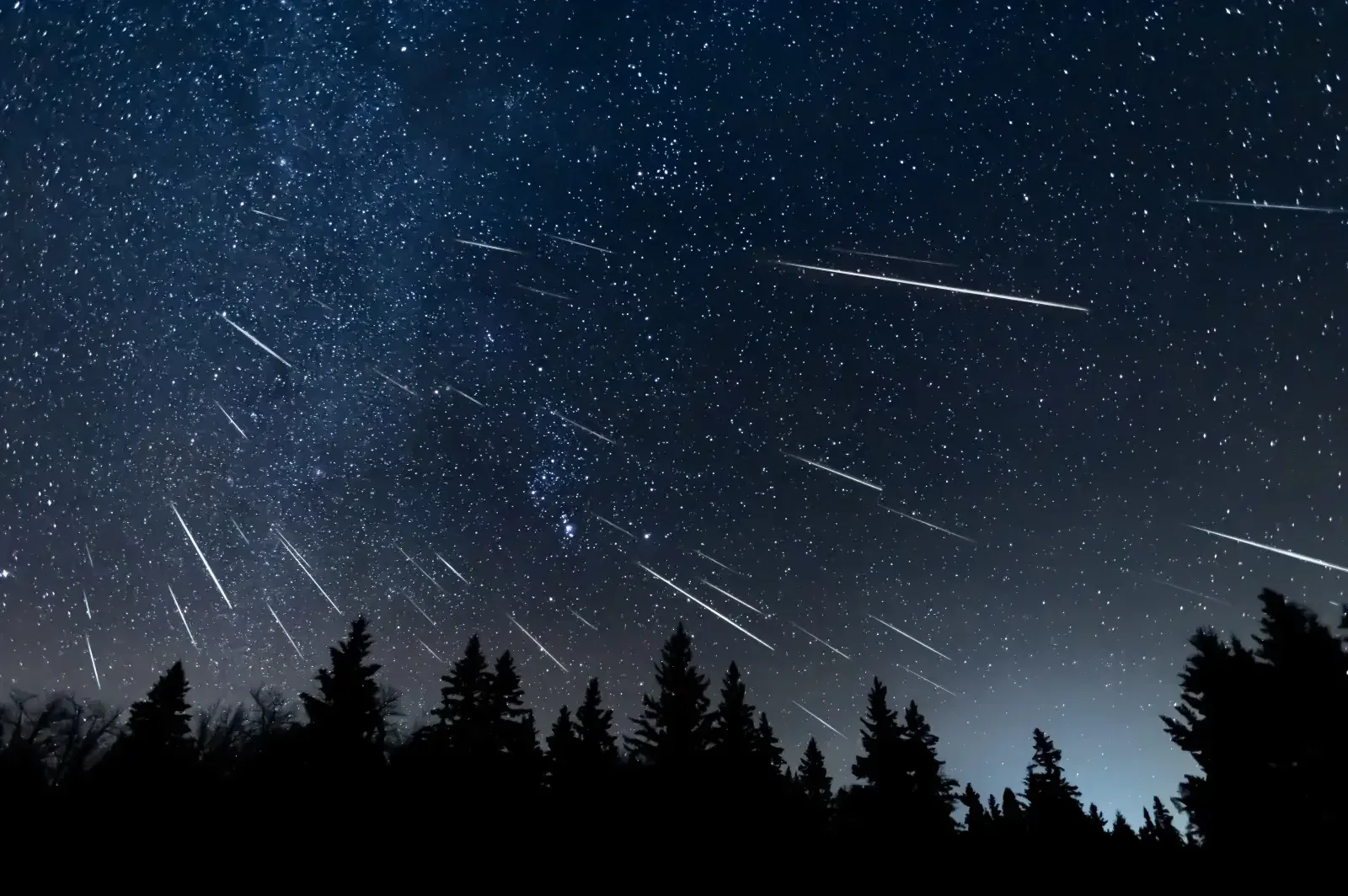Image source: Newsweek
The Orionids
There does seem to be a hint of cooler weather in the morning now. If you are up early be sure to make time to walk outside and check out Venus putting on a show. Although the planet will be in the sky throughout the day and cannot be seen, the super-thin waning crescent Moon will be passing 4 degrees south of Venus Sunday about an hour before sunset.
On Tuesday the New Moon will provide skywatchers a great opportunity to see the spectacular Orionid meteor shower. Find a safe dark site away from light pollution, watch that region of the sky, east, where the constellation Orion is rising and passing across the southern sky. The source of the Orionids is comet 1P/ Halley. These meteors are bright and fast-traveling about 41 miles per second. They leave incandescent debris behind them as the cross our field of view, heating up the area around their path. These trails may last a split second or even a few minutes. Even a fireball might be possible. Heading out after midnight-the back of a pickup with a reclining lawn chair and a group of friends seems the ideal way to observe a meteor shower to me.
The pieces of space debris that interact with our atmosphere to create the Orionids originate from comet 1P/Halley. Each time that Halley returns to the inner Solar System its nucleus sheds ice and rocky dust into space. The dust grains eventually become the Orionids in October and the Eta Aquarids in May if they collide with Earth's atmosphere.
Edmund Halley discovered several comets and managed to predict the return of this one as happening every 76 years. It is perhaps the most generally recognized comet for even non-skywatchers. Its presence has been known for thousands of years, even featured in the famous Bayeaux Tapestry which tells the story of the famous Battle of Hastings in 1066.
Comet Halley takes about 76 years to orbit the Sun once. The last time comet Halley was seen by casual observers was in 1986. Comet Halley will not enter the inner solar system again until 2061. It is one of the darkest or least reflective objects in the solar system. It is about 9 miles long, five miles wide and deep. We can see it because of its tail of dust and debris that is sloughed off as it travels on its regular orbital path around the sun.
Of course, one may also enjoy seeing Orion rising from the eastern horizon, following Taurus the Bull on the regular predictable since time began schedule. This wonderful pair remind us of the constancy of the passing seasons and star patterns. The math involved in our solar system and the universe itself make astonishing space missions succeed because of the deep understanding of math. If you ask your favorite math teacher to explain how it happens you might ignite a new interest in math for yourself.
Noticing the phases of the Moon can also help us locate particular planets or stars. On Frida, just after full dark, the waxing crescent Moon will pass very near the star Antares, the red star in Scorpius whose name means rival of Mars.
Saturn will be in the southeast traveling along the ecliptic, still near the constellation Pisces and Aquarius, although the stars of those two constellations will be difficult to see unless you are in a dark site.
The Great Square of Pegasus is almost at the zenith now by 9:00 PM. Now that the baseball season is heading into the ‘world series’ you might enjoy thinking about Pegasus as a baseball diamond, with Princess Andromeda playing first base. Home plate is a red giant star, while the other bases are blue giants. Several are multiple star systems which has intrigued astronomers once they had powerful telescopes to see the doubles.
Andromeda’s parents are there near the zenith too, Queen Cassiopeia’s W and the pentagon of King Cepheus are possible to see with decent dark skies and it is fun to imagine the wild game being played while the major league teams of the US play out their desire to be THE champions.
You might want to keep a list of the things you observe as you star gaze-you might be surprised by how many wonders you are able to actually see.
Until next week, KLU and check out the meteor shower opportunity. carolutsinger@att.net

